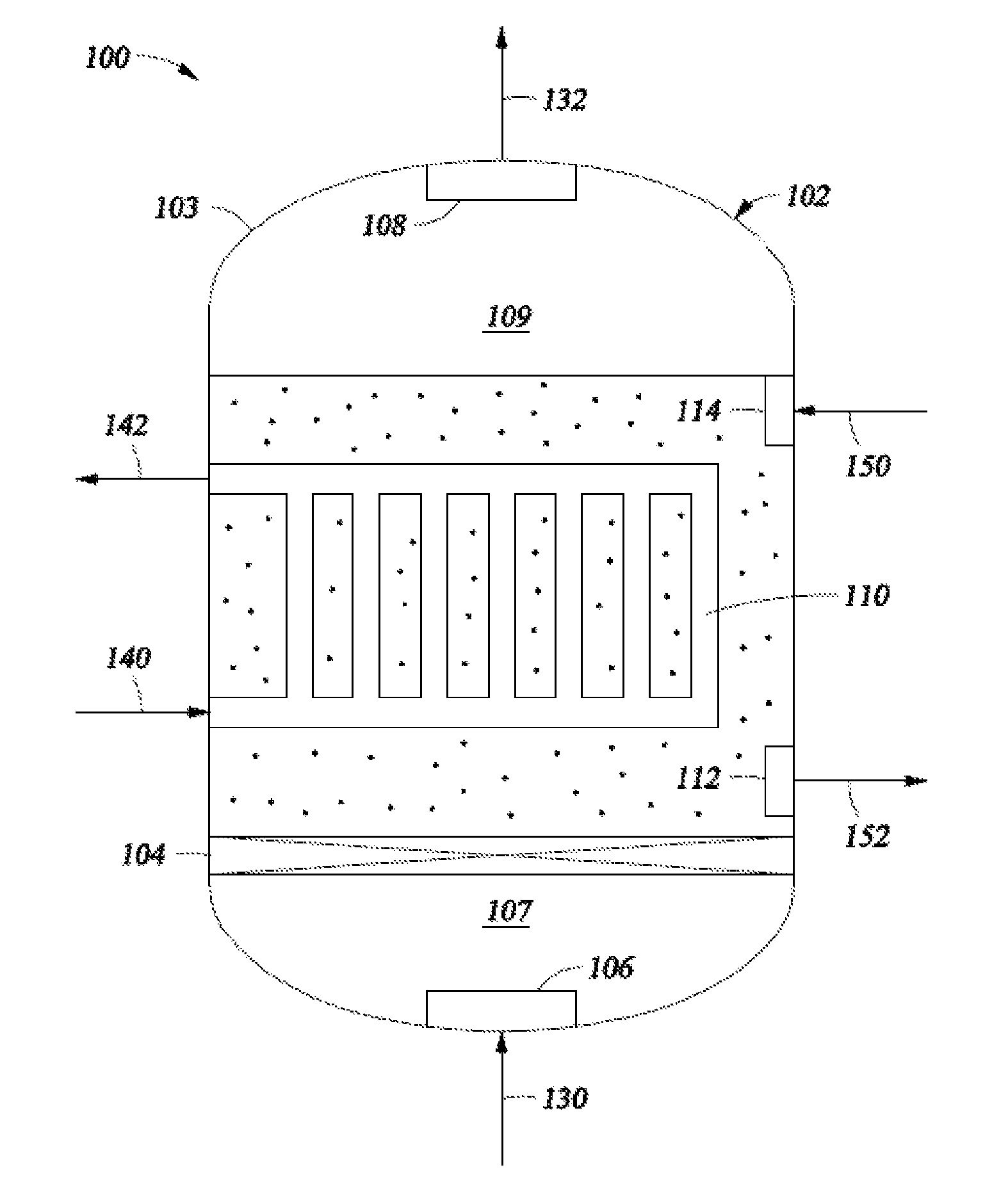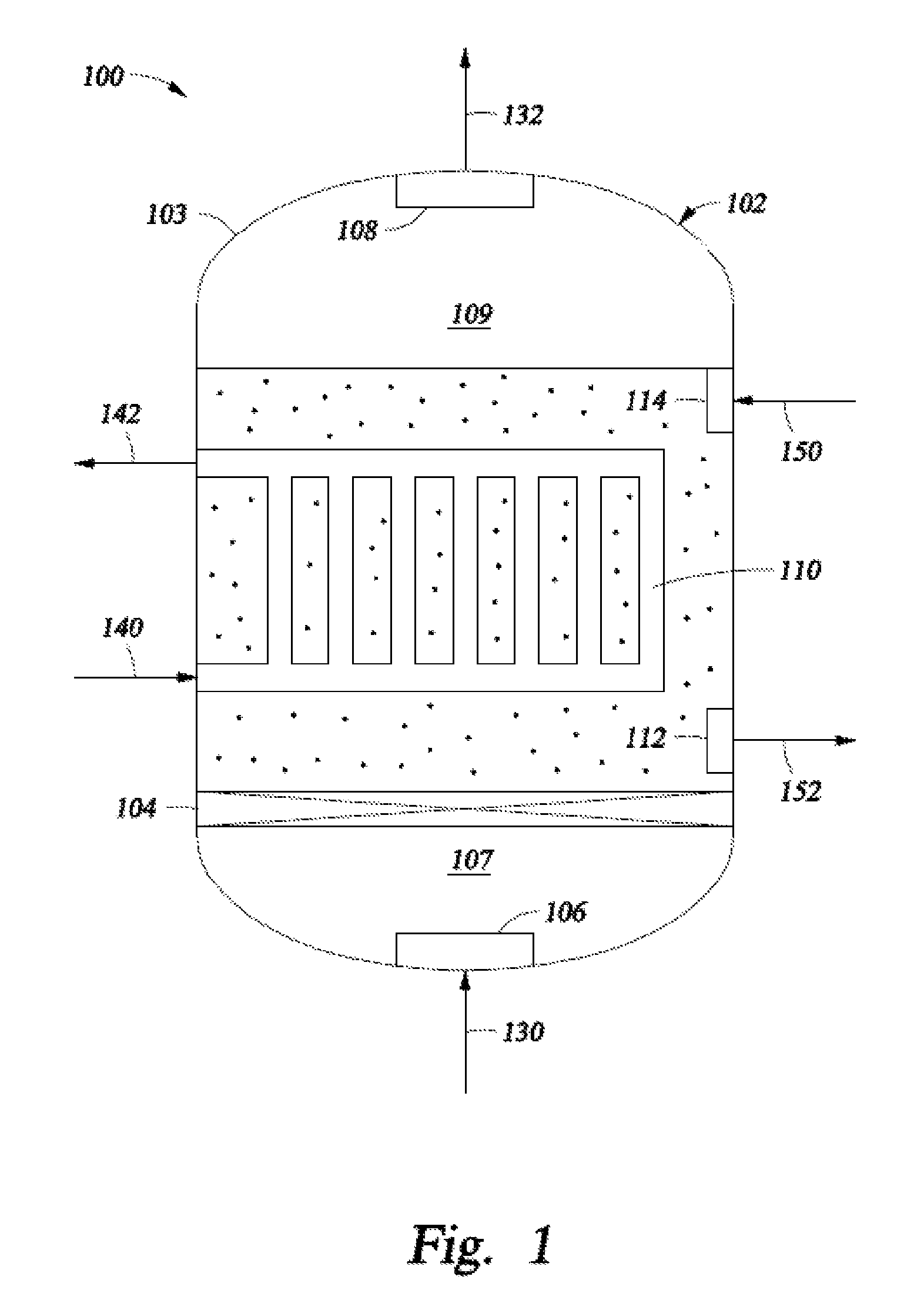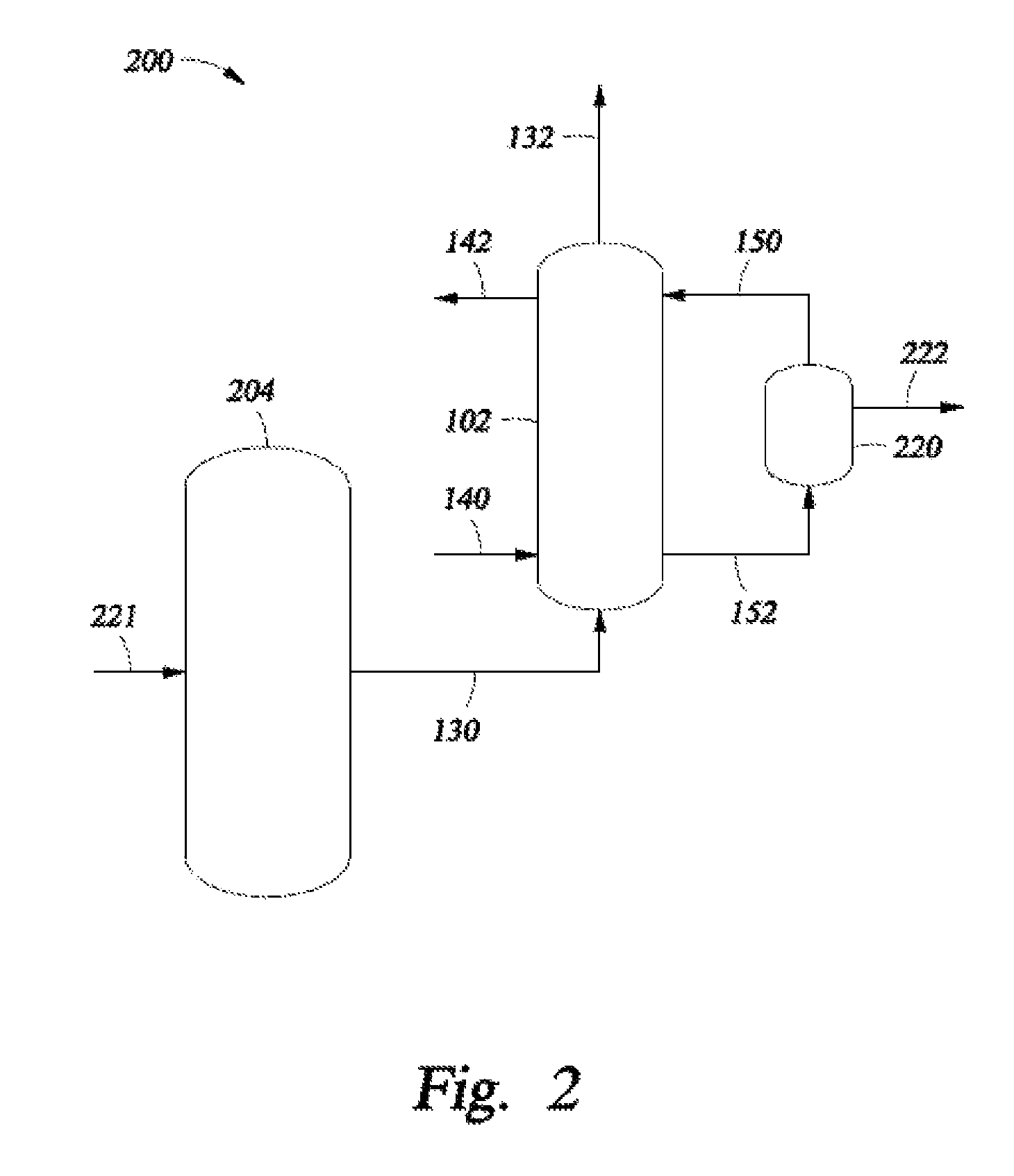Selective hydrogenation of alkynyl-containing compounds and polyunsaturated compounds
a technology of alkynyl-containing compounds and polyunsaturated compounds, applied in the direction of hydrocarbons, chemistry apparatus and processes, organic chemistry, etc., can solve the problems of process loss control of reaction temperature, process suffer from several limitations, etc., to enhance system efficiency, enhance selectivity, and heat recovery efficient
- Summary
- Abstract
- Description
- Claims
- Application Information
AI Technical Summary
Benefits of technology
Problems solved by technology
Method used
Image
Examples
embodiment 2
3. The method of embodiment 2, wherein the first converter feed comprises at least 2 mol % acetylene based on the total first converter feed.
4. The method of any one of embodiments 1 to 3, wherein the catalytic particles convert at least a portion of the acetylene to ethylene at operating conditions sufficient to yield a conversion rate of at least 0.4 moles / hour / cc of catalytic particles.
5. The method of any one of embodiments 1 to 3, wherein the catalytic particles convert at least a portion of the acetylene to ethylene at operating conditions sufficient to yield a conversion rate of at least 2 moles / hour / cc of catalytic particles.
6. The method of any one of embodiments 1 to 5, further comprising utilizing at least a portion of the extracted heat to perform one or more of (i) generating steam from the heated utility fluid, (ii) combining the heated utility fluid with a pyrolysis feed provided to a conversion reactor upstream of the slurry conversion unit, and (iii) heating the pyr...
embodiment 22
23. The method of embodiment 22, further comprising separating the acetylene from the reactor effluent.
24. The method of any one of embodiments 1 to 23, comprising passing the vapor product to a finishing acetylene conversion unit to convert the remaining acetylene in the vapor product to ethylene.
25. The method of any one of embodiments 1 to 24, wherein each of the catalytic particles comprise at least 2 wt % of an active catalytic material comprised of one or more metals selected from Group 8 to 10 of the Periodic Table based on the total weight of the catalytic particle.
26. The method of any one of embodiments 1 to 25, wherein the catalytic particles comprise >0.5 wt % palladium or platinum based on the total weight of the catalyst particle.
27. The method of any one of embodiments 1 to 26, wherein each of the catalytic particles comprise at least 10 wt % of a metal selected from Groups 8 to 10 of the Periodic Table based on the total weight of the catalytic particle.
28. The metho...
embodiment 31
32. The method of embodiment 31, wherein the churn turbulent regime has superficial gas velocities above about 10 cm / sec.
33. The method of any one of embodiments 1 to 32, wherein the operating conditions includes a pressure≧303 kPa and ≦2068 kPa.
34. A system for processing hydrocarbons to produce ethylene comprising:[0142]a slurry conversion unit configured to convert a first converter feed into ethylene and having:[0143]a housing forming an interior region;[0144]an inlet medium configured to:[0145]divide the interior region within the housing into a first interior region and a second interior region;[0146]restrict flow of a second converter feed from the second interior region into the first interior region; and[0147]permit the flow of the first converter feed from the first interior region into the second interior region;[0148]an inlet means configured to pass a first converter feed from a location external to the housing to the first interior region;[0149]an outlet means configur...
PUM
| Property | Measurement | Unit |
|---|---|---|
| hydrogenation reaction temperature | aaaaa | aaaaa |
| reaction temperature | aaaaa | aaaaa |
| temperatures | aaaaa | aaaaa |
Abstract
Description
Claims
Application Information
 Login to View More
Login to View More - R&D
- Intellectual Property
- Life Sciences
- Materials
- Tech Scout
- Unparalleled Data Quality
- Higher Quality Content
- 60% Fewer Hallucinations
Browse by: Latest US Patents, China's latest patents, Technical Efficacy Thesaurus, Application Domain, Technology Topic, Popular Technical Reports.
© 2025 PatSnap. All rights reserved.Legal|Privacy policy|Modern Slavery Act Transparency Statement|Sitemap|About US| Contact US: help@patsnap.com



